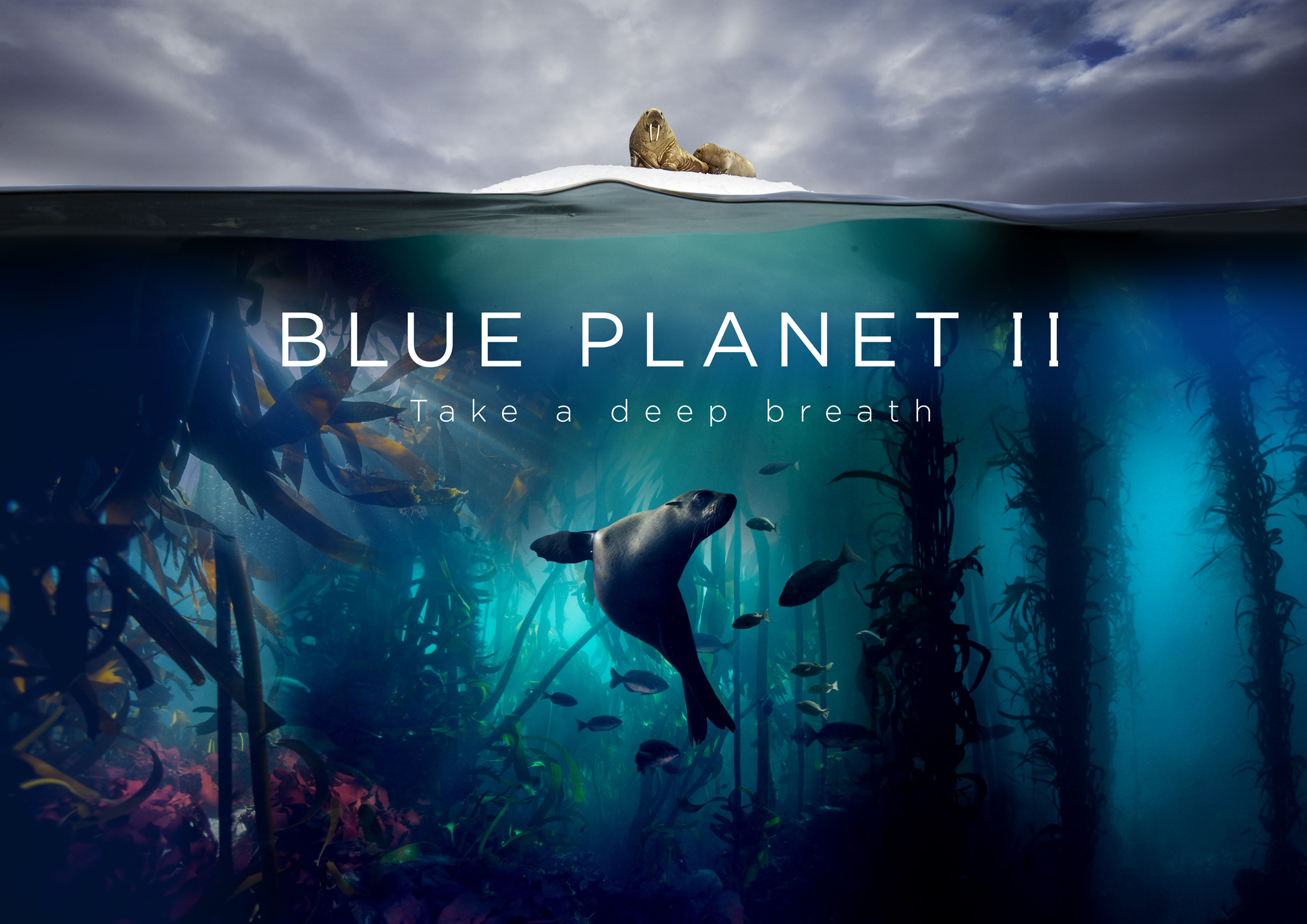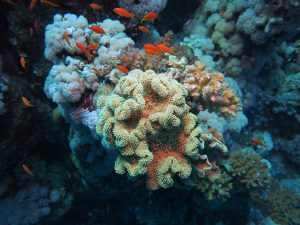
February 9, 2018, by cmay
Blue Planet II: A Call to Action
By Daniele D’Agostino and Stephanie Heyworth, Postgraduate Research Students
Each episode of Blue Planet II has been watched by an average audience of 10 million, and the series has already been sold to more than 30 countries, with the potential for the series to become a global hit. This is not surprising as the documentary consists of an excellent balance of amazing underwater shoots, revealing a number of remarkable animal behaviours and vital conservation issues. As marine ecologists and students at the University of Nottingham we could not have been happier with this outstanding result, as the series has focused on themes such as marine conservation and fish behaviour that match our current research foci.
The general public commonly believe that fish and other marine animals are gormless, forgetful and, to some extent, primitive creatures. In this the public underestimate how smart fishes and marine animals can be and how they can modify their behaviour to respond to a particular environmental challenge. However, after watching the Blue Plant II documentaries we expect they will have had their minds changed. This TV series, indeed, has shed light on what fishes are capable of and how intelligent they can be, it also had the merit of capturing the general public’s attention and revealing the wonder of animal behaviour.
Some of these behaviours were known to science but never caught on video, while some others have been known only as fisherman tales and never documented before.
In particular fish have been shown to be capable of:
-The use of tools, as shown in the case of “persistent Percy” an orange dotted tuskfish (Choerodon anchorago) resident of the Great Barrier Reef filmed while tenaciously attempting to crack open a clam on coral. This particular behaviour was first reported in a similar species (Choerodon schoenleinii) in the journal Coral Reefs in 2011 with the authors arguing that it constituted tool use as the fish was able to “use an external object as a functional extension of mouth or hand in the attainment of an immediate goal (Van Lawick-Goodall 1970)”;
-Cooperate and communicate with different species, as shown in the “Coral Reef” episode, where a coral trout (Plectropomus leopardus) and an octopus have been filmed while hunting together, showing astonishing signs of forward planning and communication;
–Cooperation with individuals of the same species in order to perform difficult task, such as moving heavy objects (in the case of the clownfish relocating a coconut shell to provide a stable surface for their nursery), and blowing off sand to expose a dangerous predator (in the case of the shoal of bream and the bobbit worms);
–and finally, the ability to hunt low-flying sea birds as shown in episode 1 where giant trevally (Caranx ignobilis) were documented leaping and catching in mid-air birds, showing the “amazing ability of calculating the bird’s air speed, altitude and trajectory” to use Sir David Attenborough own words.
Although the wonder of the marine world has been highlighted throughout this series, the producers also brought a very hard-hitting message to our attention. Our planet is in trouble. Climate change induced by anthropogenic emission of green-house gases in causing substantial and negative impacts to our oceans globally. Sadly, what the TV series has not shown in detail is that all these remarkable behaviours could, and most likely, will be impacted by climate change. A number of studies have shown that climate change has a pervasive effect on animal behaviour. Just focusing on ocean warming for example, we know that warmer waters have a direct effect on fish physiology (by changing the energy they have available for non-basic functions) which in turn influence behaviours like activity, reproduction, risk taking and foraging requirement. We also know that ocean warming has an indirect effect on fish behaviour, through alteration of the abundance and quality of resources, like shelter and food, which consequently will affect a fish’s foraging behaviour, predator avoidance and habitat choice. Climate change can also alter environmental cues that animals use to make behavioural decisions and, finally, it can impact the factors that structure communities, such as predation and competition, which in turn affect fish behaviour.

Photo by Daniele D’Agostino
Not only did this incredible series document so many things we did not know before, it also brought to our attention some real-time issues that we as a planet are facing today. From climate change to microplastics, we as a species are putting the oceans and our planet at risk.
The heart-breaking footage of a mother whale carrying her young, lifeless calf demonstrated simply but clearly how dangerous plastics can be to marine life. As plastics break down in the ocean they begin to release toxic chemicals; these chemicals build up in the food-chain and are transferred through the food chain across trophic levels (e.g. from plankton to whales).
This chilling message was not the only one. Microplastics don’t simply come from sources such as microbeads (e.g. those that are used in cosmetics) or glitter, they mainly come from larger plastic pieces that break down over time. We are putting an estimated 8 million tonnes(!) of toxic plastic in the sea every year, some of which ends up floating on the surface creating gyres that can cover hundreds of kilometres, like the North Atlantic rubbish patch. This breakdown process, although slow, still poses a huge threat to all kinds of wildlife. From tiny chicks of the largest sea bird alive, the albatross, who have died due to stomachs full of plastic, to majestic sea turtles who mistake plastic bags for tasty jellyfish treats. Creatures large and small are being affected and Blue Planet II have shown it. One shot of a sleepy sperm whale playing with a lone plastic bag really highlighted how the little things can affect some of the biggest species in the ocean.
The effects of climate change are a hot topic of discussion in the world today. The harrowing scene of a mother walrus cradling her young, to escape hungry polar bears, brought tears to the eyes of many after she was unable to find any ice for refuge following their escape; fortunately they found safety later. This scene is still important in demonstrating the negative impacts of climate change – all over the world the effects are different and worldwide we, and animals alike, are being affected.
As humans we have an intrinsic link with the ocean; it produces two thirds of the oxygen we breathe (thanks to microscopic algal cells called ‘phytoplankton’), it stores a quarter of the carbon dioxide that we put into the atmosphere, creates jobs and provides food for millions worldwide. But, another thing Blue Planet II demonstrated was that if we work together we can make change; from conservation and protection of Leather Back turtles (Dermochelys coriacea) in Trinidad to the regrowth of whale populations following a ban on whaling back in the 1980s.
There are many things that we can take from Blue Planet II, from the sheer vastness of the oceans, that there is life deeper than we could ever have possibly imagined and that despite the fact they don’t have hands, fish can still use tools. This incredible collection of ecosystems must be protected; it is so rich and full of life, but also full of mystery. In the wise words of Sir David Attenborough himself “Surely we have a responsibility to care for our blue planet. The future of humanity, and indeed all life on Earth, now depends on us.”
To find out more about how to start contributing to change please have a look at the advice given by the BBC following the release of Blue Planet II
Additionally, you can find out how you can help with tips from the Marine Conservation Society, a charitable organisation that worked alongside the BBC and contributed to the creation of this incredible series
No comments yet, fill out a comment to be the first

Leave a Reply